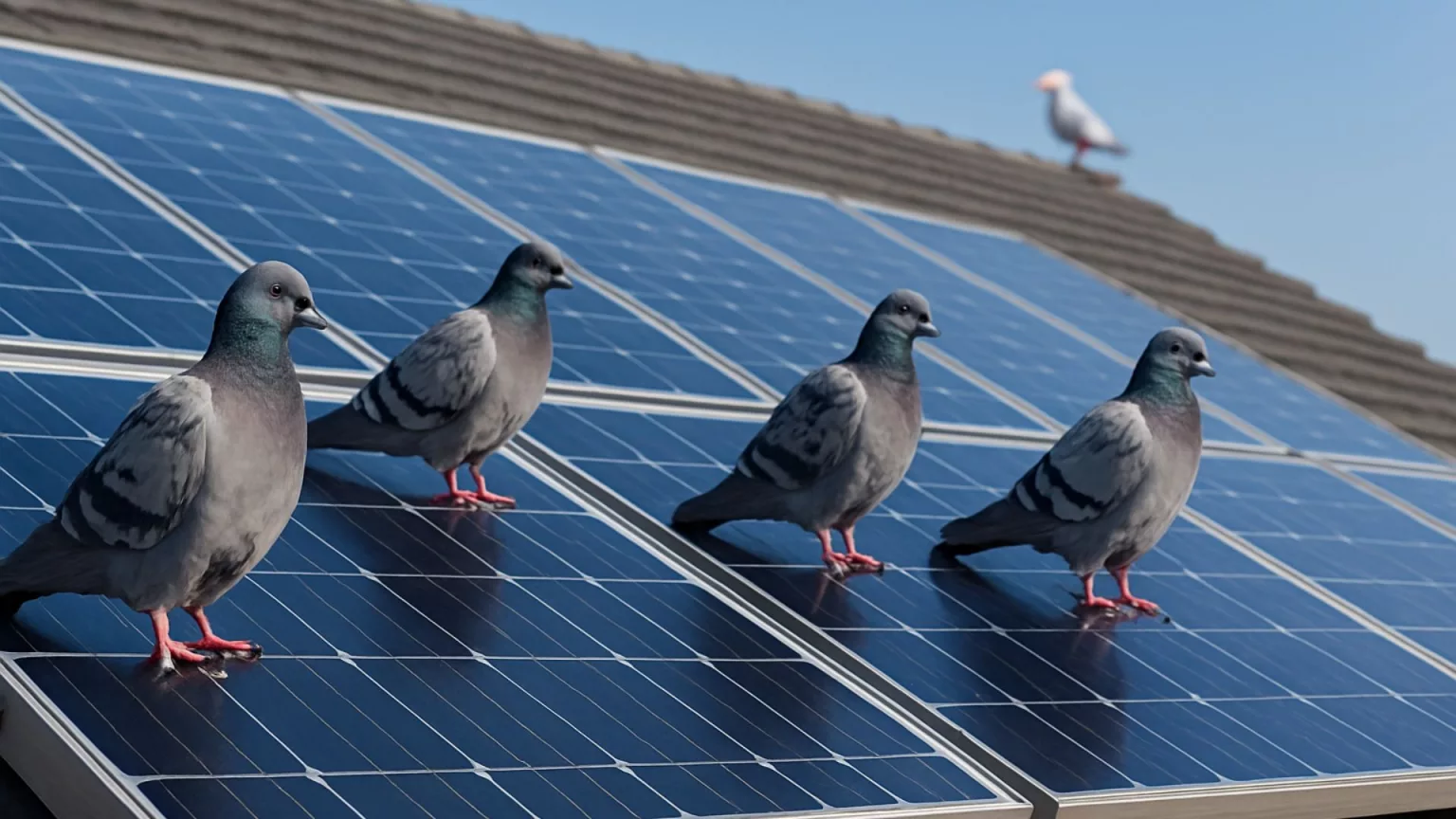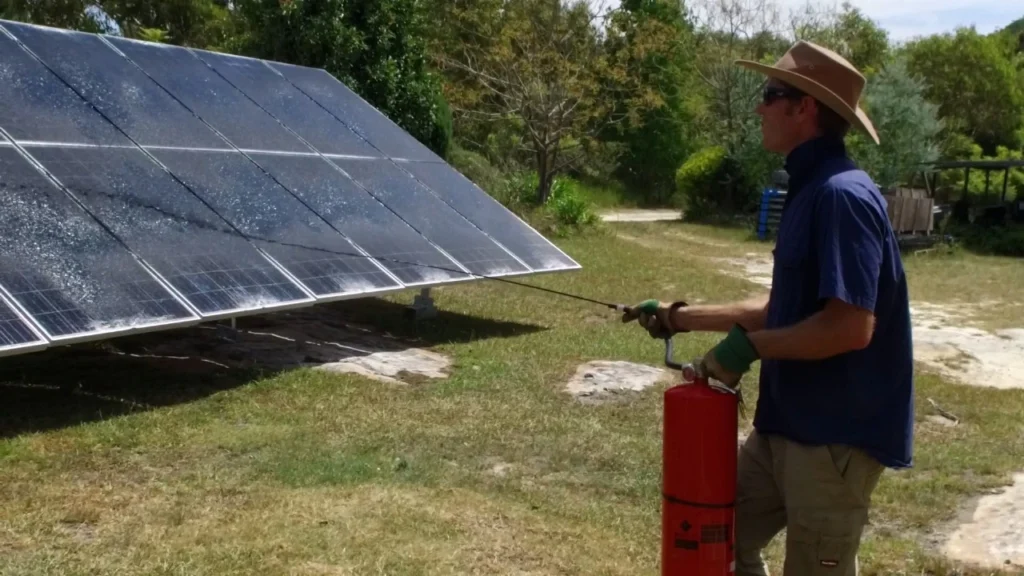Risks of Birds on Solar Panels
Roof-mounted solar panels provide just the right space for birds to nest, but the consequences can be severe. Key problems include:
-
Hotspots and efficiency loss: Nesting material and droppings shade parts of the panel, creating local “hotspots.” This raises electrical resistance in affected cells, which can melt or crack them and permanently reduce power output. In effect, bird droppings cause the same harm as extended shading of the panel’s surface.
-
Corrosion: Birds’ droppings and urine contain uric acid, a strong corrosive. Over time, these acids eat away at the panels’ anti-reflective coatings and metal parts, degrading efficiency and longevity.
-
Wiring damage: Birds often peck at or pull on exposed wires and connectors underneath panels, mistaking them for nesting material or food. Chewed, cut or frayed cables can interrupt the electrical circuit (causing power loss) and even pose fire or safety hazards.
-
Noise and nuisance: Pigeons and other birds commonly coo and shuffle nesting material at dawn, disturbing sleeping residents. Meanwhile, the accumulation of droppings, feathers and sticks creates a dirty mess on the roof, clogs gutters, and can damage tiles over time.
-
Secondary pests: An active bird nest can attract rats, mice, insects or mites seeking the warm shelter. These pests often chew through wiring or spread further into the property, compounding the damage caused by the original birds.
Given these risks, it pays to include bird-proofing when the system is installed. UK solar experts like Sunsave advise adding bird protection during the initial installation, since retrofitting later (with extra scaffolding) will cost far more.
Bird-Proofing Solutions
The easiest way to avoid bird damage is to physically block nests. Common methods include fitting wire or plastic mesh or metal “skirts” around the edges of the array, and attaching bird-spike strips to the panel frame. These barriers prevent birds from squeezing under panels. (Other deterrents – reflective tape, scare devices or ultrasonic repellents – exist, but have mixed effectiveness.)
For example, installing plastic or stainless steel bird spikes along panel edges creates an uncomfortable landing surface, discouraging birds from settling. However, fixing long spike strips with screws or adhesive around a panel can be time-consuming.
One practical innovation is the Solar Spike Speed Clips system. These specially designed plastic clips snap onto the side of each solar panel frame and hold spike strips securely in place. As a UK installer explains, the Speed Clips “snap effortlessly onto the side of your solar panel frame – no tools or adhesives required,” providing a firm hold while still allowing quick removal of the spikes when needed. In other words, Solar Spike Speed Clips allow you to quickly attach (or detach) bird-proofing spikes without drilling or permanent fasteners. They come in 30 mm and 35 mm (and now 40 mm) heights to fit most panel frames, in black or clear for a low-profile look.
Key advantages of using Solar Spike Speed Clips include:
-
Effortless installation: The clips simply snap onto the panel frame sides, eliminating the need for drilling or glueing. This saves installation time and avoids damage to the panels or mounting rails.
-
Removable design: Because each clip grips the spike strip, you can easily detach the spikes later for roof access or cleaning. This makes maintenance much simpler than glued spikes.
-
Versatile fit: Available in multiple sizes (30 mm, 35 mm, 40 mm), the clips fit most panel frame depths. Black or clear colours ensure the protection blends in with the panels.
-
Secure, discreet barrier: Once clipped on, the attached spike system forms a tight physical barrier that birds won’t land on, yet it remains nearly invisible from below.
In summary, protecting solar panels from bird nesting is crucial to maintaining efficiency and avoiding repair costs. In the UK, simply adding bird-proofing spikes around the panel edges will keep pigeons and other common pests at bay. Products like Solar Spike Speed Clips make this approach quick and practical: you just snap on the clips, attach spike strips, and instantly have a long-lasting barrier. By taking these steps, homeowners can safeguard their solar investment and enjoy full power output without nuisance or damage. Go here to purchase Bird-Proofing Spike Clips to protect your solar panels.




